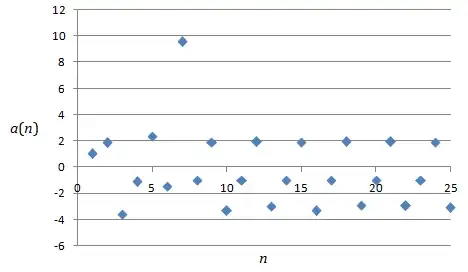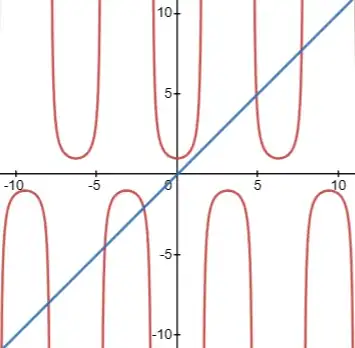I made up the following family of sequences: $a_1\in\mathbb{Z}$ and $a_n=\sec (a_{n-1})$ for $n>1$.
I conjecture that, for any $a_1\in\mathbb{Z}$, the proportion of positive terms approaches $\frac{1}{\sqrt {2\pi}}$ as $n\to\infty$. Is my conjecture true?
Evidence for my conjecture
For $a_1=1$, here is the graph of $a_n$ against $n$ for $1\le n \le 25$.
Using Excel, it seems that, the proportion of positive terms approaches a limit as $n\to\infty$, and the limit is independent of the value of $a_1$.
I found that, for $a_1=1, 2, 3, \dots, 25$, among the first $10000$ terms, the average proportion of positive terms is $0.398940$, which is very close to $\frac{1}{\sqrt {2\pi}}\approx 0.398942$.
Another look at the sequence
Here are the graphs of $y=\sec x$ and $y=x$.
We start at $(1,\sec 1)$, then go horizontally to the line $y=x$, then go vertically to the curve $y=\sec x$, then go horizontally to the line $y=x$, etc. Among the points that we meet on the curve $y=\sec x$, about $0.39894$ of them are above the $x$-axis.

